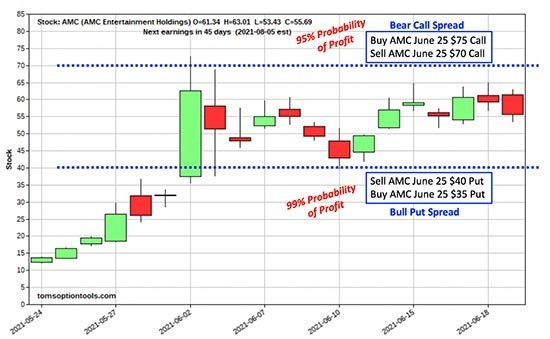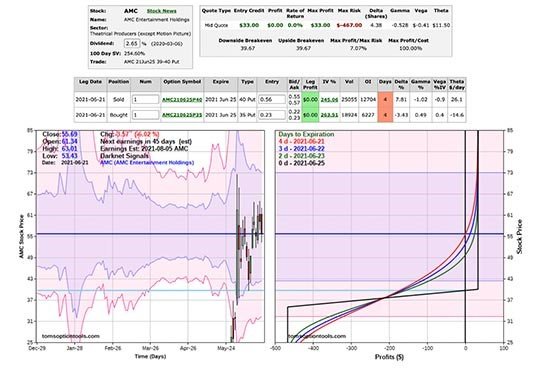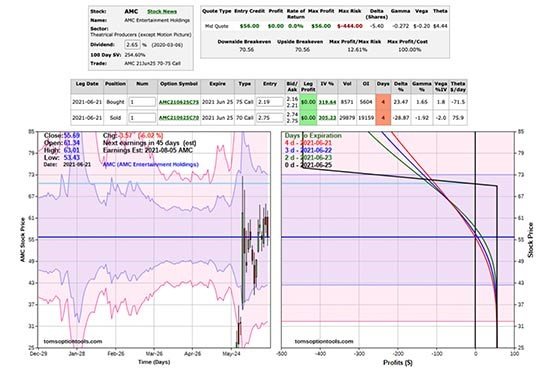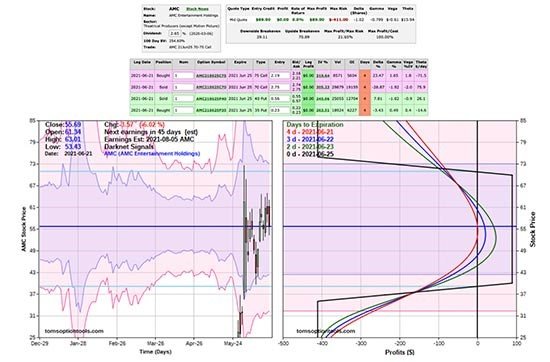We all know the story by now: Back in January, when the “WallStreetBets” Reddit community first came on the scene, GameStop Corp. (NYSE: GME) was trading in the mid-teens. Then the online community’s guerilla day traders gave it the viral treatment.
A few weeks later, GME hit $483. On that exact same day, it posted a low of $112.25 – a $370.75 daily range. Crazy!
And of course, a few weeks after that, it was trading down around $50. It’s gone through quite a few cycles by this point. Yesterday, at midday, it was trading above $183.
So, clearly this “all-out viral blitz” strategy is very effective at driving stocks up to meteoric levels. Thing is, like a game of musical chairs, the last person standing is going to get hammered as the buyers are exhausted and these high-fliers come crashing down.
(Just imagine being a buyer at $483 and unloading your position at $50. Mommy!)
To say that meme stocks are “volatile” is like calling the Gulf of Mexico “a lake” – an understatement. These stocks move at the whim and fancy of a largely inexperienced community that doesn’t exactly have a traditional appreciation for risk.
Volatility isn’t always a good thing for stock buyers, but it’s bread and butter for options traders. There’s always a limited-risk way to grab easy profits with options.
That’s where a strategy like the one I’m about to show you comes into play. You can bring it to bear on Nokia Oyj (NYSE: NOK) – a stock that went up double digits on Tuesday – or any other meme stock you hear about.
Anyone can join in the meme-stock fun and make some profits of their own without worrying about walking into a buzz saw…
My Low-Risk, Five-Day Profit Meme Stock Strategy
Here’s one of my favorite strategies for profiting on meme stocks. The basic strategy is to sell option spreads where I don’t expect the stock to be in a handful of days.
- Short-term credit spreads (with less than one week to expiration).
- Sell credit spreads 30% out of the money at support and resistance.
Here’s an example:
On June 21, 2021, after shooting up from the mid-teens to $72.62 in a heartbeat, AMC had formed two-week channel between $40 support and $70 resistance.

Given two weeks of channeling and with option premium elevated, the idea is to sell credit spreads roughly 30% away from the stock price and preferably at support and resistance. If the stock doesn’t reach the credit spread, the spread expires worthless, securing the credit received.
Both $40 support and $70 resistance are about 30% away from AMC trading at $55.
There are two different kinds of credit spreads – bearish credit spreads and bullish credit spreads, built with calls and puts, respectively. Often you see them referred to simply as “bear call spreads” or “bull put spreads.”
To build a bear call spread, you…
- Buy a higher-strike call.
- Sell a lower-strike call.
And to build a bull put spread, you…
- Sell a higher-strike put.
- Buy a lower-strike put.
As the word “credit” implies, these trades bring in a credit. The risk is calculated by subtracting the credit from the width of the spread. They have lower return on investment (ROI) potential in exchange for high probability.
Given the stock can move quickly, we don’t want to be in these trades very long. So, use options that expire within a week.
Following these rules, here are two trades you could have done on Monday, June 21:
Trade No. 1: AMC June 24 $40/$35 Bull Put Spread

This trade brought in $33 on $467 of risk, a 7.07% ROI within five days. At first, that doesn’t sound like a lot of ROI, but when you consider it’s realized in five days and you have a 99.1% statistical probability of banking it, it’s a fantastic trade.
Where do I get the probability? My tools calculate it.
Trade No. 2: AMC June 24 $70/$75 Bear Call Spread

This trade brought in $56 on $444 of risk, a five-day ROI of 12.61% ROI. Again, a nice profit for a five-day trade, especially considering 95% statistical probability of profit.
Now for the cool part: You could’ve done both of these credit spread trades in a move the pros call the “Iron Condor.” You read that right.
Pro Trade: AMC June 24 $35/$40/$70/$75 Iron Condor

This AMC iron condor brings in $89 credit on $411 of risk with a 94.6% statistical probability of profit in five days.
In all cases above, if the stock doesn’t cross the short strike, the spread you sold expires worthless and yields max profit.
On June 25 – expiration day – AMC closed at $54.06, and each of these trades expired worthless.
Now, to be clear, AMC could have crashed to $20 or rocketed up to $100 leaving you at max risk on the losing trade (or losing side of the iron condor).
So, you’ve absolutely got to be ready to exit should the stock break out. Don’t form an emotional attachment to your trade – that’s good advice for any trade. And while I’m at it, be sure you’re aware of and comfortable with the risks when making trades like these. Use sensible position sizing and allocations.
Like I said, that’s always a smart call, but especially when you’re playing the meme stocks.
You can deal with this by following a simple exit rule: To avoid maximum risk, exit the losing credit spread if and when the stock breaks above or below the short strike.
- For bull put spreads, this means that you close the spread should the stock break below the short put strike.
- For bear call spreads, exit should the stock break above the short call strike.
It’s tough to overstate how big of an impact these hordes of new, inexperienced, and, shall we say, risk-friendly investors have made on the markets in 2021. I mean, at one point, these folks were bringing $672 million into the market every minute.
— Tom Gentile
Source: Money Morning

